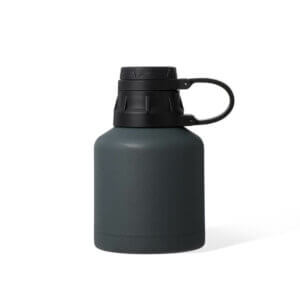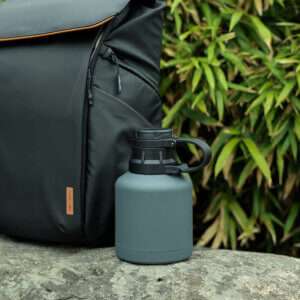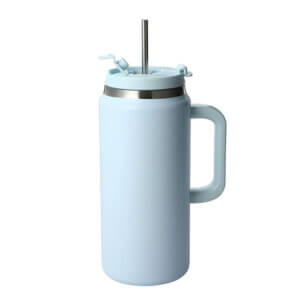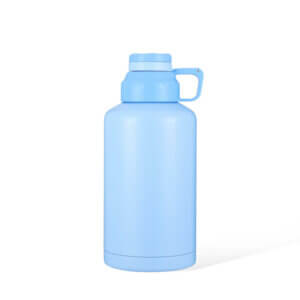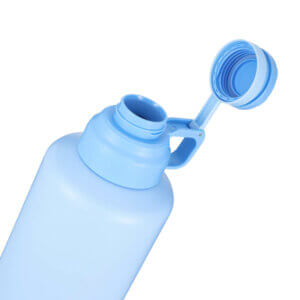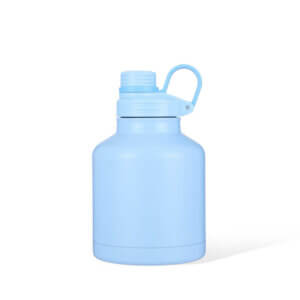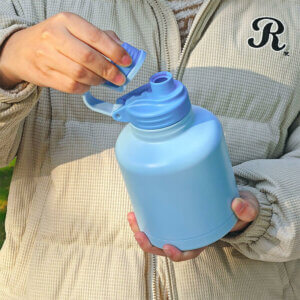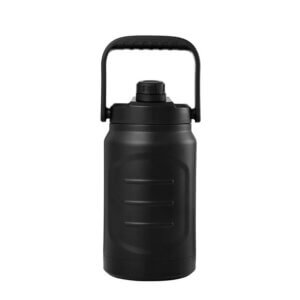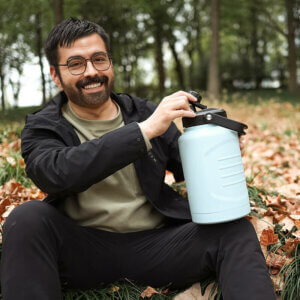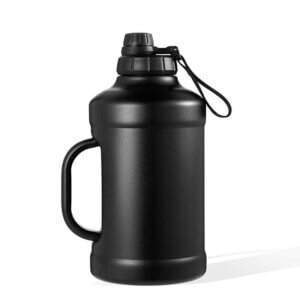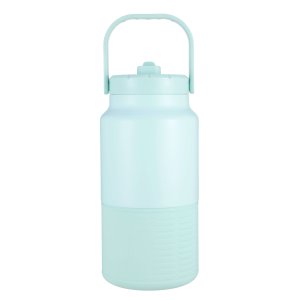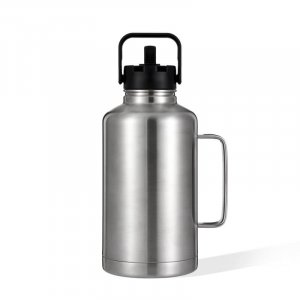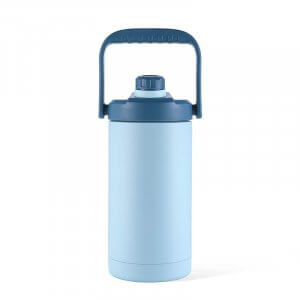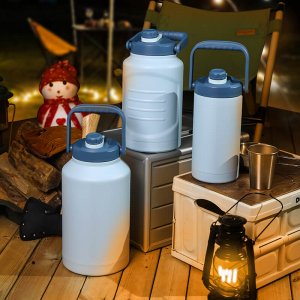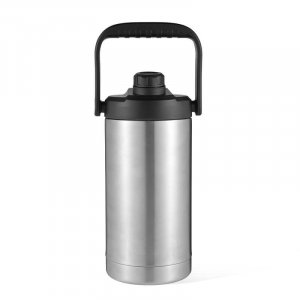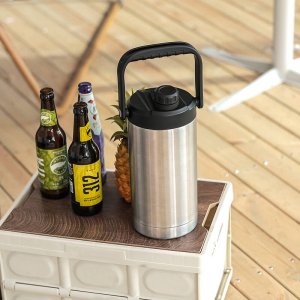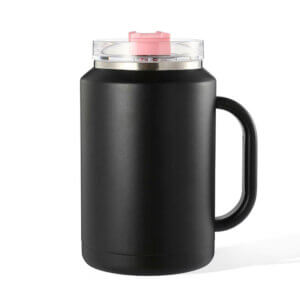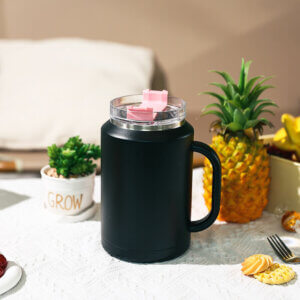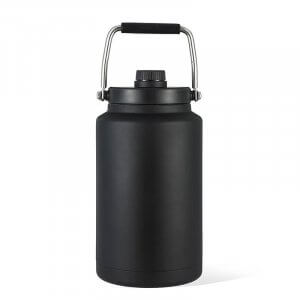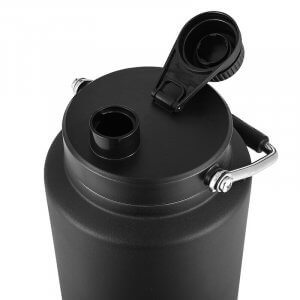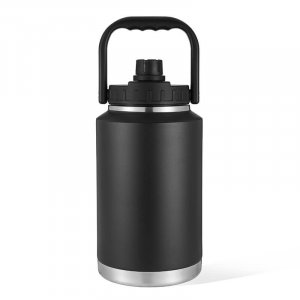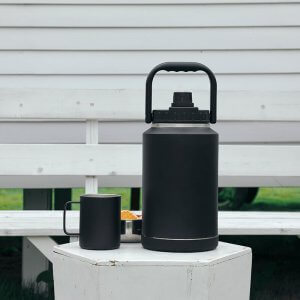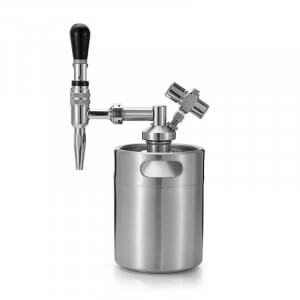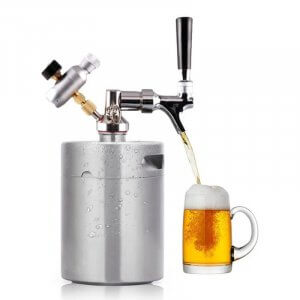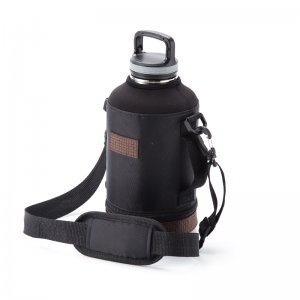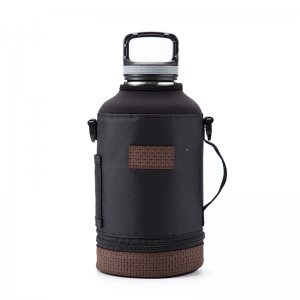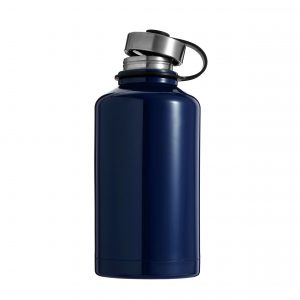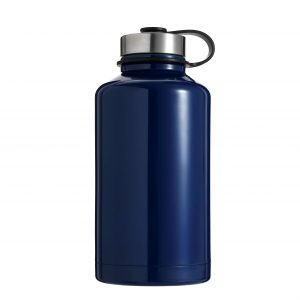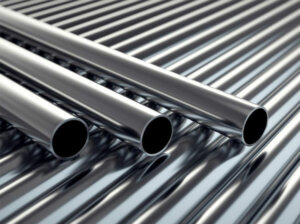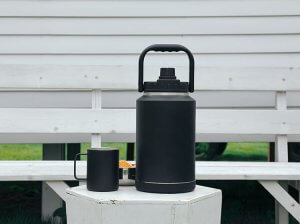WHOLESALE STAINLESS STEEL GROWLER MANUFACTURER
Since 2000, Innovation, Design, Manufacture.
Our focus has always been on producing high-quality products, which is why we use only premium stainless steel materials and food-grade inner coatings to ensure both product safety and environmental protection. Our wholesale growlers come in a range of large capacities, from 64oz to 192 oz, to suit various outdoor activities. MOQ can be negotiated, send your quote today!
Stainless Steel Growler Wholesale
Custom Options From Insulated Water Jug Manufacturer
Everich boasts a strong team of over 30 professionals dedicated to research and development and product design. We are capable of creating over 450 new product design solutions every year. Furthermore, we undertake more than 100 self-designed ODM mold opening projects annually and hold over 400 registered patents.
# Custom Project Services: We offer free customization services for wholesale insulated gallon water bottle. Our team of over 30 reliable designers and engineers can create 2D and 3D models based on your ideas, and we’re happy to sign an NDA to protect your concepts.
# Custom Bulk Growler Caps: Our beer growler manufacturer produces a variety of lid types, including straw, sports, handle, stainless steel, wooden, and flip. We acquire over 400 patents annually.
# Custom Surface Finish: Our stainless steel growler manufacturers offers a variety of surface finish options including spraying, powder coating, 3D/4D/5D printing, water transfer, air transfer, heat transfer.
Automated Gallon Bottle Production Lines
At Everich, we believe in embracing automation to stay competitive in the industry. That’s why we have invested heavily in advanced automatic production lines for pipe drawing, metalworking, cleaning, welding, polishing, painting, spraying, marking, and water transfer printing.
By utilizing robot systems to perform labor work, we’ve significantly improved efficiency while reducing labor costs. Our robots can be programmed to operate 24/7 with a high degree of accuracy, allowing us to offer a cost-effective solution to our clients.
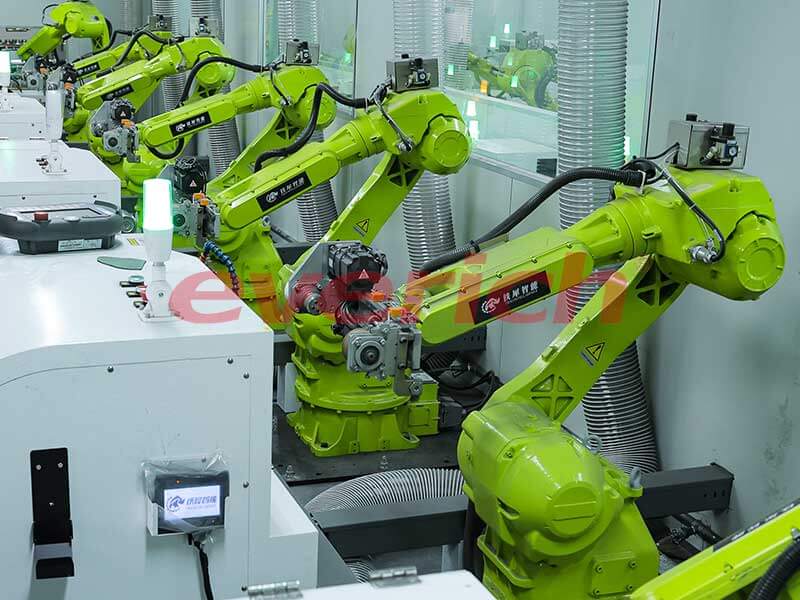
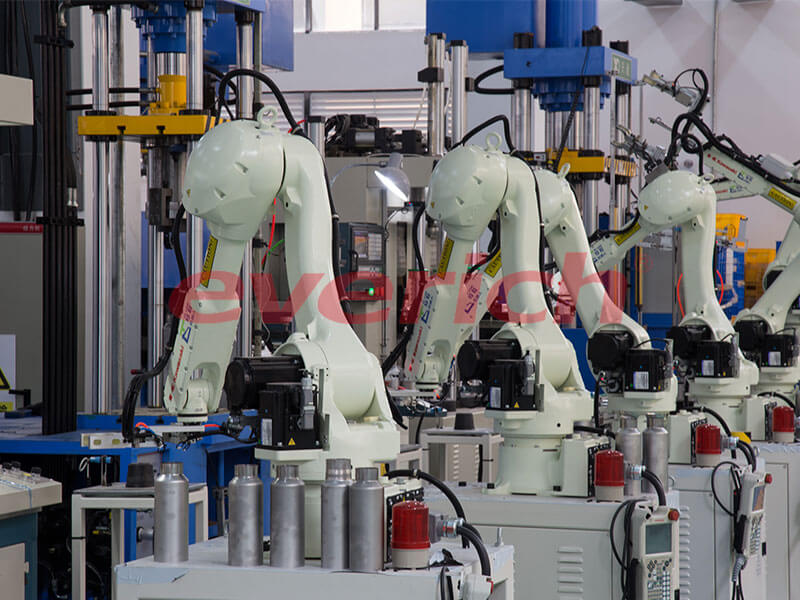
Eco-Friendly Insulated Water Jugs For Your Business
At Everich, we believe in sustainable development. We have been awarded various certificates such as RCS, GRS, CRS, and SCS for our efforts. We have also started using recycled steel, plastic, and glass, as well as renewable materials. We are committed to energy conservation and emission reduction and use photovoltaic energy conservation. We have also introduced advanced dust removal equipment and sewage treatment facilities.
Searching For An Insulated Water Jug Manufacturer To Expand Your Business?
MOQ is flexible and can be negotiated. depending on your project, Accept Customization for Small Orders. Design Products as Your Idea. Innovation and Robot Efficient Production. Submit an Online Message. Reply Within 24 Hours by Email.
FAQs About Wholesale Growlers
For your convenience, we have compiled the most frequently asked questions. Still, please feel free to contact us if you have any additional questions.
What Is A Growler?
An insulated growler is a container made of stainless steel,such as 304ss and 316ss, designed to maintain the temperature of beverages for an extended period. The term “growler” initially referred to a container used to transport draft beer from a brewery or taproom. Insulated growlers take this concept a step further by incorporating insulation to maintain the temperature of the beverage, whether it is hot or cold.
Some key features of an insulated growler include:
– Insulation: Insulated growlers have double-wall vacuum insulation that helps maintain the temperature of the liquid inside. This insulation prevents heat transfer between the beverage and the external environment, keeping hot liquids hot and cold liquids cold for hours.
– Sealed Lid: They typically come with a sealed and airtight lid to prevent leaks and maintain the insulation properties. The lid often includes a secure locking mechanism to ensure it stays closed during transport.
– Stainless Steel Construction: Basically insulated growlers are made of stainless steel, which is durable, rust-resistant, and easy to clean. This material also provides excellent insulation properties.
– Capacity: Insulated growlers come in various sizes, with 64 ounces (1.89 liters) being a common size. However, you can find them in smaller or larger capacities depending on your needs, and Everich provide wholesale growlers from 64oz to 129oz.
– Wide Mouth: Many insulated growlers have a wide mouth, making it easier to pour and clean. Some may also have a built-in handle or a carrying strap for convenience.
How Do Growlers Work?
Insulated growlers are designed with a combination of materials and features that create a barrier, minimizing the transfer of heat between the contents of the growler and the surrounding environment. This barrier helps to preserve the temperature of the beverage inside, whether it is hot or cold. Here’s how insulated growlers work:
Double-Wall Construction: Insulated growlers typically have a double-wall construction. This means there are two layers of material (usually stainless steel) with a small gap or vacuum between them. This gap minimizes the transfer of heat through conduction, as air is a poor conductor of heat.
Vacuum Insulation: The space between the inner and outer walls of the growler is often evacuated to create a vacuum. This vacuum reduces heat transfer through conduction and convection, as there is no air (or very little air) to carry heat between the walls.
Reflective Barrier: Some insulated growlers have a reflective barrier or coating on the inner surface of the outer wall. This barrier reflects radiant heat, further reducing the amount of heat that can enter or escape the growler.
Sealed Lid: The lid of an insulated growler is typically designed to create an airtight seal. This prevents air from entering or escaping the growler, which can affect the temperature of the beverage. The lid also prevents any spillage or leaks.
Thermal Inertia: The mass and thickness of the insulated walls contribute to the growler’s ability to maintain temperature. The thicker the walls, the more thermal inertia the growler has, meaning it can resist temperature changes for longer periods.
In summary, insulated growlers use a combination of insulation techniques, including double-wall construction, vacuum insulation, reflective barriers, and sealed lids, to minimize heat transfer between the contents and the outside environment. This design helps keep hot liquids hot and cold liquids cold for an extended period, making insulated growlers ideal for transporting and enjoying beverages while maintaining their desired temperature.
How Big Is A Growler and How Much Does A Growler Hold?
Everich offers a range of wholesale growlers in various large capacities, from 64oz to 192oz, to cater to different outdoor activities. Our insulated growlers are specially designed to keep beverages, such as beer, cold for an extended period. Although the size of an insulated growler can vary, it usually comes in a few standard sizes, with 64 ounces (1.89 liters) being one of the most common sizes.
How Big Is A 64oz Water Bottle?
A growler is a 64-ounce water bottle designed to hold liquids. These bottles are usually large and are great for staying hydrated all day, especially in situations where clean drinking water may be scarce.
What Is Your Payment Term And Shipping?
For Payment: Our normal payment term is T/T 30% deposite after order signed and 70% against copy of B/L. We also accept L/C at sight.
For Shipping: EXPRESS, SEA or AIR are all available.
We will suggest high cost performance delivery method for your refer.
What Is The MOQ For Your Wholesale Stainless Steel Growler Order?
Our MOQ is flexible and can be negotiated, giving you the highest flexibility in the testing market. We will calculate the cost correspondingly, hoping you can place large orders after checking the quality of our products and know our service. Please feel free to contact us, we will respond fast to your request.
If I Provide My Sketches/Design, Can You Sign An NDA With Me To Protect My Design?
Of course, we are professional in OEM/ODM projects and we protect all the designs of every client, we will sign NDA if needed to ensure that we won’t send your artwork to any other clients and won’t sell your OEM items to anyone else. Any questions please send us your inquiry.
Do Beer Growler Manufacturer Offers Samples And How Long Is The Sample Lead Time?
Sure. We usually provide existing samples for free, but a little sample charge for custom designs. Samples charge is refundable when the order is up to a certain quantity.
We usually send samples by FEDEX, UPS, TNT, or DHL. If you have a carrier account, it will be fine to ship with your account, if not, you can pay the freight charge to our Paypal, we will ship with our account.
It takes about 2-4 days to reach. If you want your own designs, it takes 5-7 days. Click here to get a sample now!
Knowledge Of Insulated Beer Growler
How To Test Stainless Steel Grade 304?
Stainless steel bottles play a crucial role in modern life and are favored for their excellent performance and durability. Among them, grade 304 stainless steel has gained much attention due to its outstanding corrosion resistance and low magnetic properties. However, the market also contains products of varying quality. Below, Everich...
Read More>>The Significance of NDA in Custom Design Water Bottle
In the realm of custom design water bottle manufacturing, the importance of Non-Disclosure Agreements (NDAs) cannot be overstated. This article will delve into the reasons why NDAs play a crucial role in safeguarding intellectual property, maintaining confidentiality, and ensuring the success of custom design projects. By understanding the significance of...
Read More>>Top 5 Wholesale Stainless Steel Growlers Manufacturer
Among Everich’s foreign trade export orders in recent years, insulated water bottles with larger capacities are more popular. In view of the consumption characteristics of overseas customers, since this year, our factory has customized a variety of wholesale stainless steel growlers. Zhejiang is the province with the most insulated water...
Read More>>
